I have visited a wonderful exhibition with sculpted eggs. Imagine the amount of patience needed in order to empty out the content of an egg and handle a special drill in order to create a sculpture in the egg’s shell. I felt very inspired to admire this type of artistry and I was eager to enroll myself in an egg painting workshop. During Easter there is a tradition in my country to decorate eggs. In some rural ares women make truly intricate patterns on the eggs and this is a very ancient form of art: humans have been making art on eggs for a long time. The oldest decorated eggsshells have been discovered in South Africa in Diepkloof Rock Shelter and they were 60000 years old. I wanted to try my skills on the egg and to see how it is to use it as a canvas. I am a very curious human being and you know that I do not shy away from having new experiences under my belt.
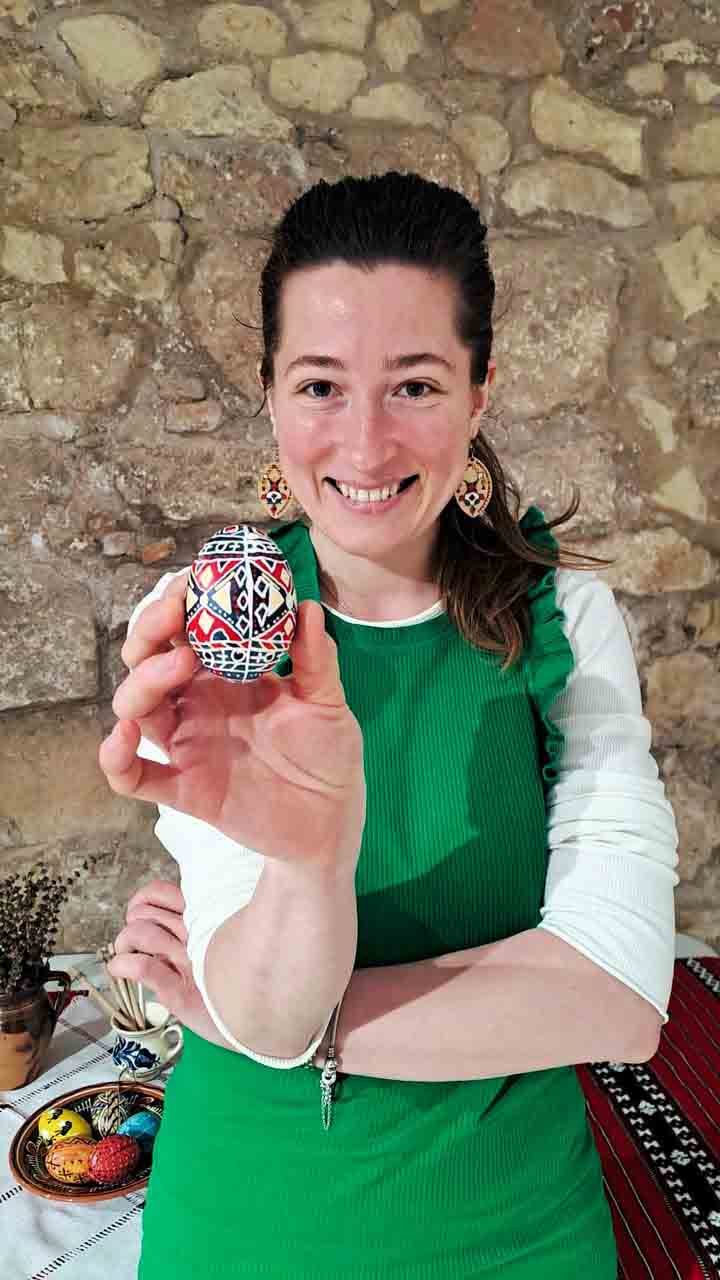
It all starts with the working station: melted beeswax on top of an electric stove, special dye for eggs put in jars, pencil, an emptied egg, a cotton cloth.
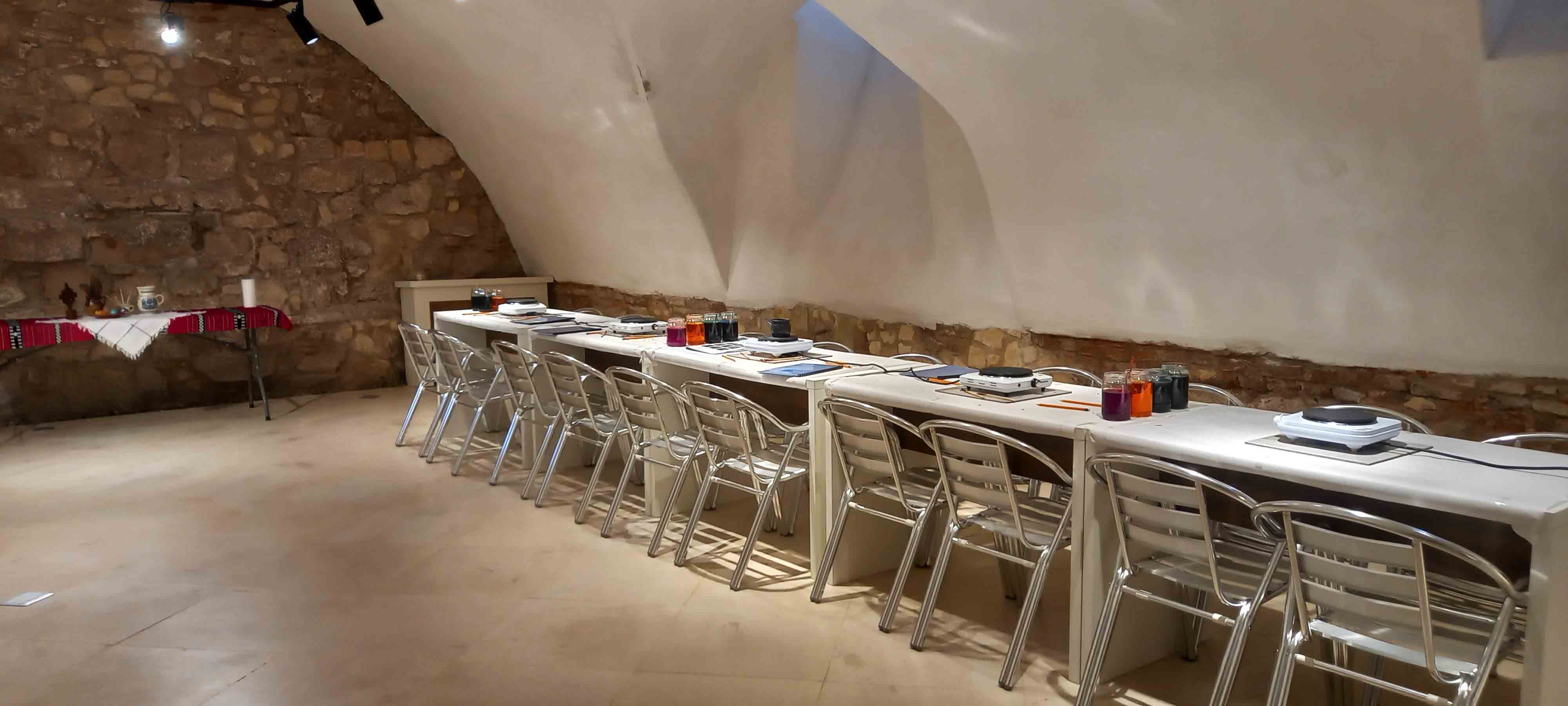
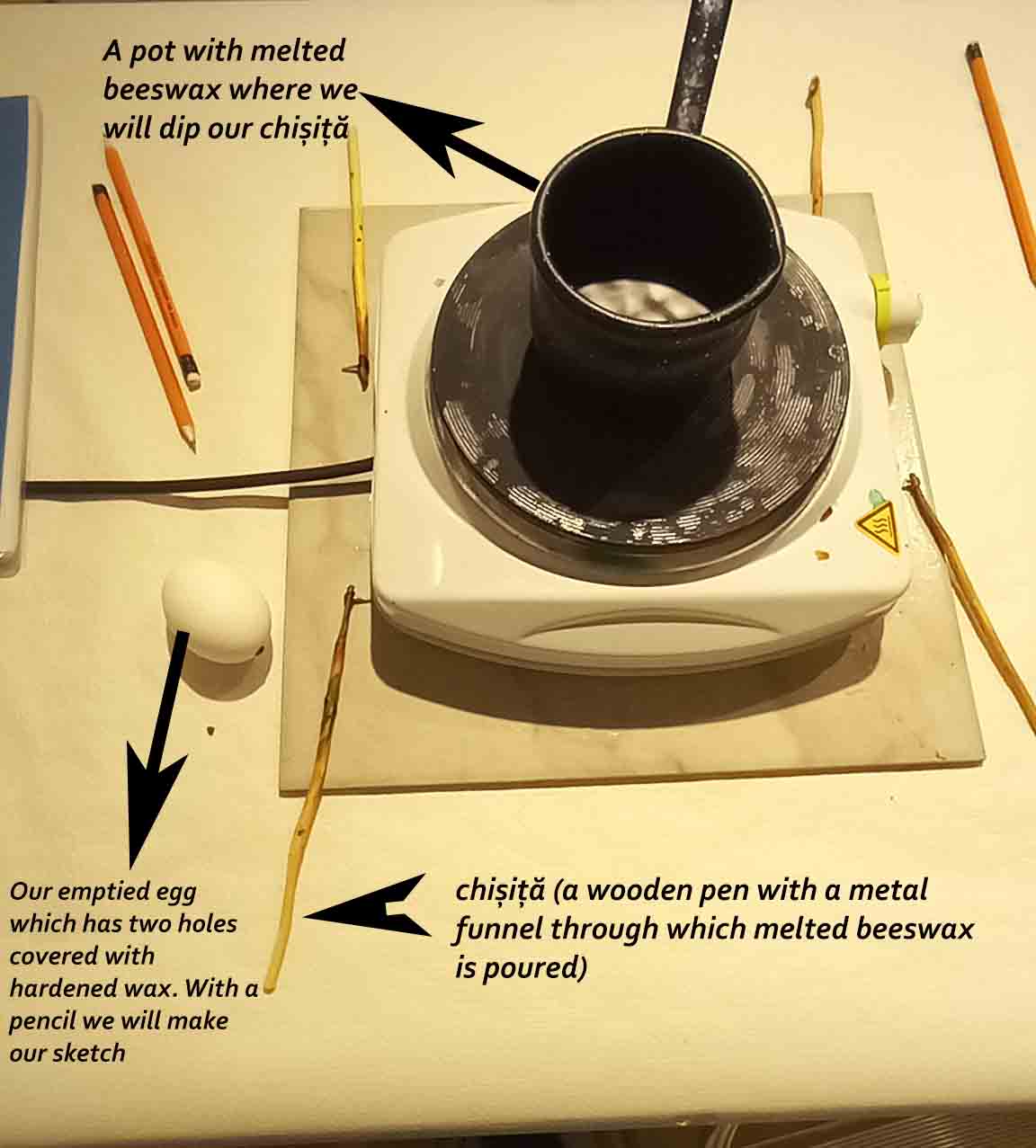
It helps to make dividing lines with the pencil on the egg, first at the half and then into quarters. These lines will act as guides. I was shown a portfolio with different models but I decided to go wild and make up my own pattern.

What happens next is really fun: I will take the wooden instrument that we call chișiță which is basically a wooden pen with a metal funnel tied with metal wire through which melted wax can flow. We dip it into the pot with melted wax and go on top of the lines that we have made with the pencil. This is important as we will seal the lines and these will remain white after the first dip in the dye.
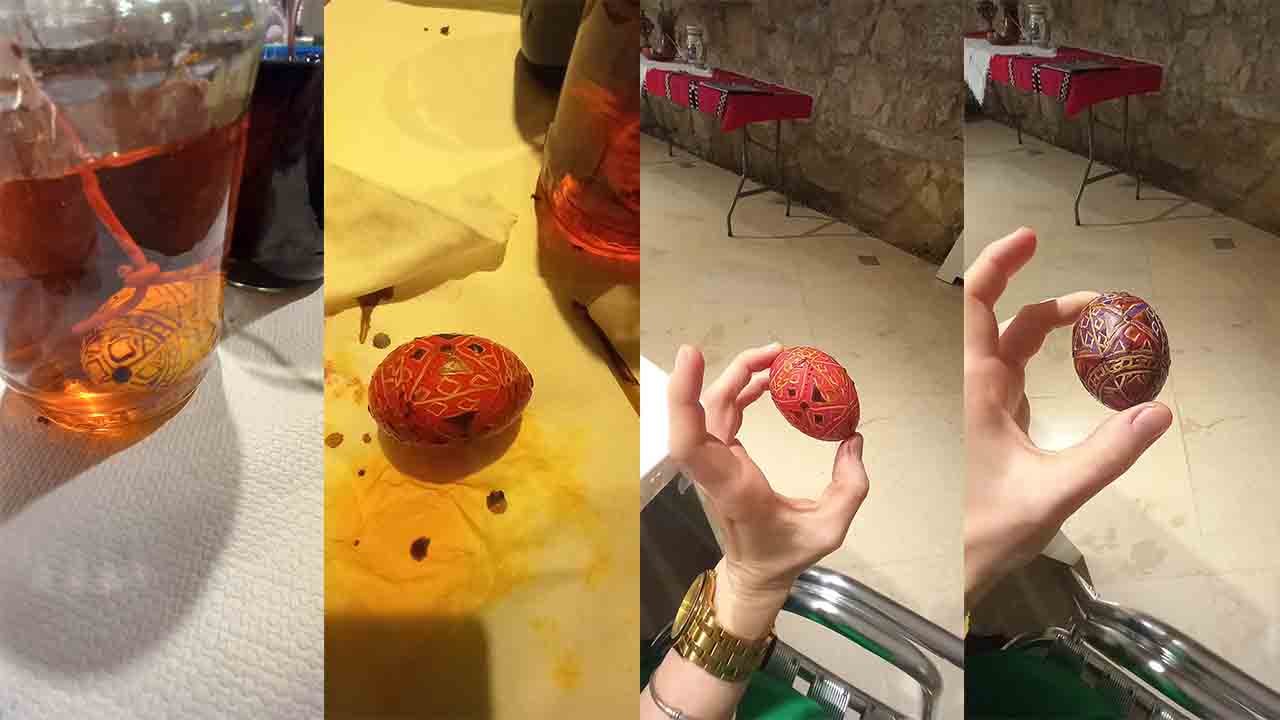
Now it gets complicated: after each dip in the dye you must decide what to cover with wax in the next step. As you progressively dip the egg in the dye you must imagine the final result and choose what to properly seal with wax. Whatever gets covered will get to keep the colour. I know, it sounds like rocket science until you get the hang of it. I had limited options when it comes to the variety of dyes but it was fabulous to notice the colour shift.
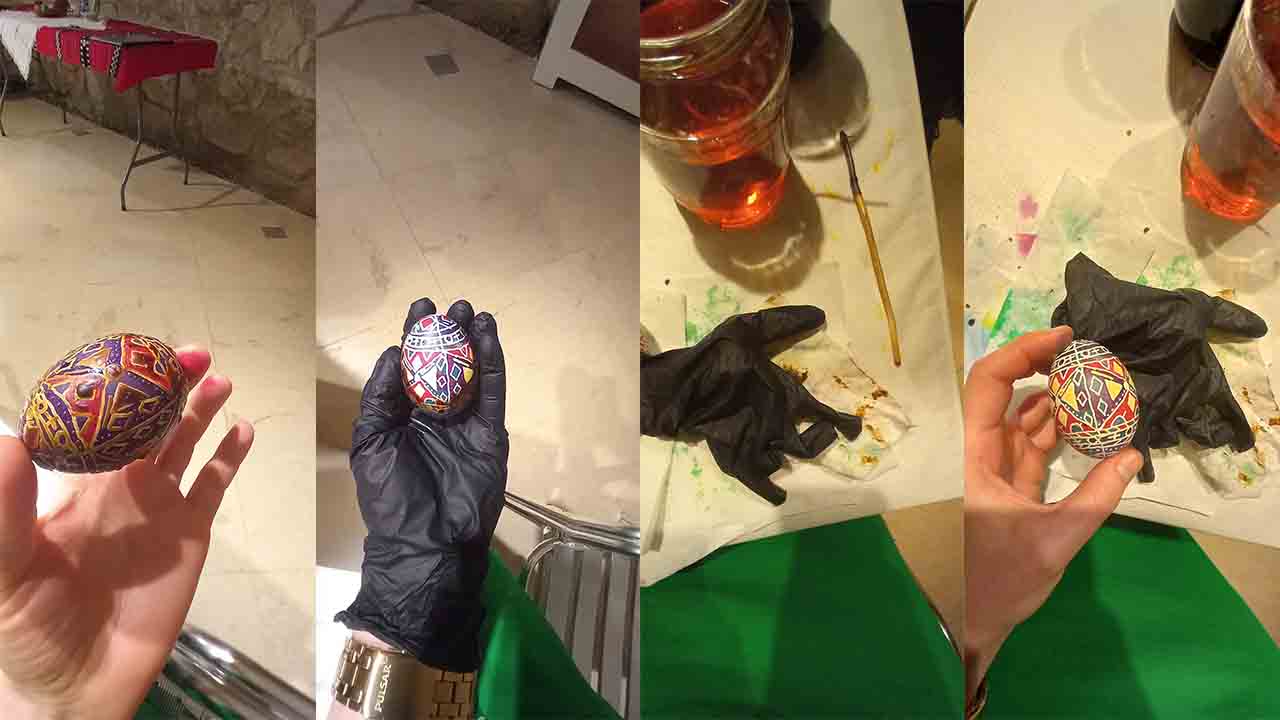
I felt like a child. Free. Excited. Curious. Happy. To have the freedom to do something new by using my native artistic talent felt liberating.
After the final application of the dye we take the egg and remove the two wax seals through which the content of the egg has been emptied. We do this because we will put the egg closer to the stove and slowly melt the wax and use the cotton cloth to remove it and reveal the final result. If we do not take out the seals toxic gas will accumulate due to heat inside of the eggs and the egg will crack.
Wiping out the wax and seeing what I have created was my ultimate joy. I felt proud to be able to work on this. The workshop lasted two hours but for me it felt like only five minutes have passed. This made me realize how much happiness I get from playing with colours on any medium. It made me realize that painting is the type of activity that makes me lose the notion of time and feel utterly calm and peaceful.
I was grateful to be able to attend this seminar and to also notice the exhibition. They even had a lamp made out of an ostrich egg!
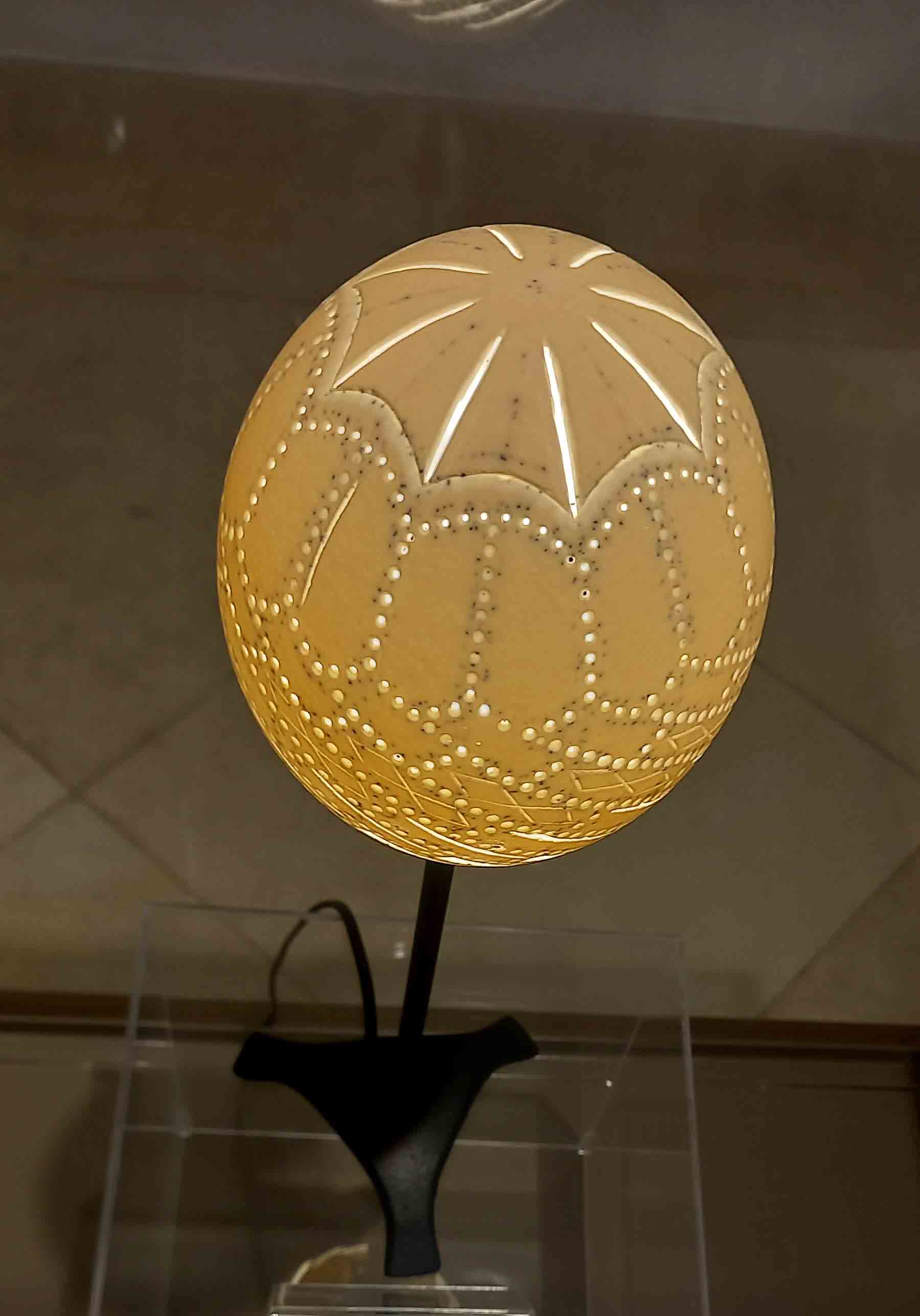
Imagine the amount of work behind it! I will end my post with a curiosity fun fact: did you know that the emu’s egg is the highy sought after for egg sculpting because as it is drilled it reveals multiple nuances of blue, brown and green? Fabulous, right? But do not rush to try to get one because you need a special permit as an artist to be able to buy it and sculpt it!